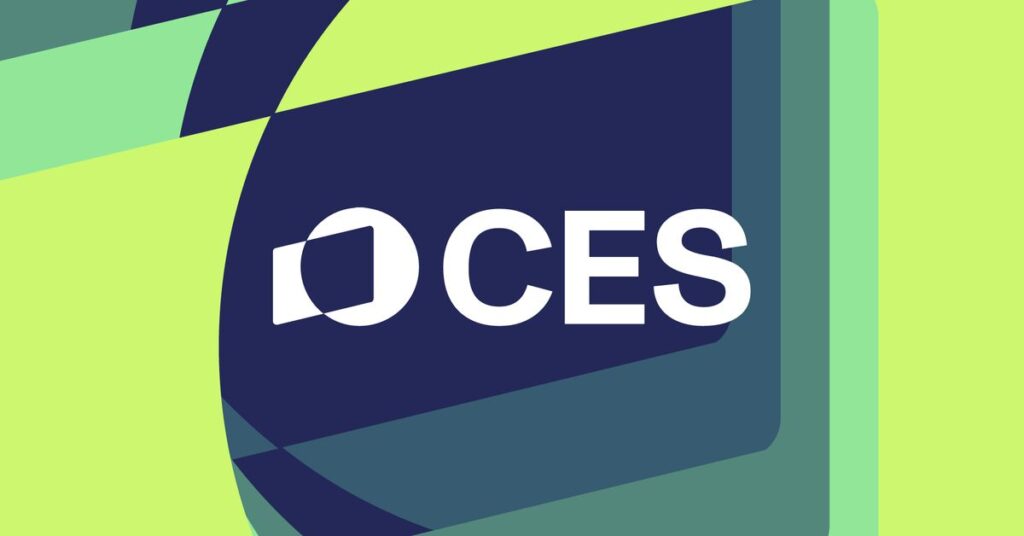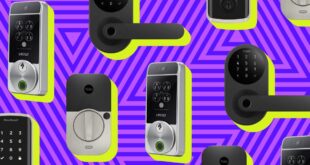
It’s time for the biggest tech show of the year. CES 2025 officially kicks off next week, with most of the industry’s biggest names gathering in Las Vegas to announce new products and demonstrate some of the most exciting tech they have coming throughout the year.
CES is traditionally a show about TVs, laptops, and smart home tech. But it’s increasingly become a big show for cars, wearables and health tech, and a whole lot more. This year, expect one abbreviation to show up a lot across every single category: AI. The AI hype cycle is rolling straight into 2025, and there’s certain to be AI popping up on the next generation of TVs and cars, like it or not.
The show officially starts on Tuesday, January 7th, but you can expect announcements to start coming out on Sunday and Monday ahead of the show floor opening and a day of press conferences.
Here are the big beats we’re expecting to see at the show.
TVs
I’m expecting two prevailing trends for TVs at CES 2025: screens will keep getting bigger, and AI features are going to be everywhere — to the point of being inescapable. Consumers have been gravitating toward larger TVs over the last several years (we’re talking 75 inches and up), so get ready to see some giant OLED and Mini LED models from Samsung, LG, TCL, Hisense, and others.
And you can bet that practically every TV maker will be dialing the AI-powered tricks up to 11 this year. They’ve already done so with automatic picture and audio settings. But considering how popular ChatGPT, Microsoft Copilot, and other AI assistants have become, it’s only a matter of time (maybe just days) before chatbots find their way to your next TV.
Expect the buzziest news to come from Samsung and LG. But I’m very curious to see what Panasonic has in store after a successful return to the US TV market last year.
Smart home
CES 2025 will be the year of the smart home gadget. I’m anticipating an avalanche of new product announcements from companies like Aqara, Nanoleaf, Tapo, Reolink, SwitchBot, Shelly, Lutron, Lifx, Flic, and Cync, all of whom are exhibiting this year. I hope to see some real innovation — products that take the smart home to the next level — especially now that there’s the foundation of Matter, a unified connectivity standard they can leverage.
One area I expect to see a lot of new products with exciting features is smart locks. With the new Aliro standard launching next year, this space is ripe for disruption. Easier, more seamless ways to deal with locks and security is a universal need that will also help bring the benefits of home automation to more people.
We may see more screens than we really want to
Another trend I anticipate we’ll see on the show floor is new ways to control your smart home. Following the success of Amazon’s Echo Hub, I think we’ll see a slew of new touchscreen interfaces that connect to your smart home devices and offer a way for anyone in the home to control lights, locks, shades, and more without their phone or voice. We may see more screens than we really want to — Samsung has already teased its new “screens everywhere” initiative and is putting a touchscreen on all its appliances.
Another big theme will be robotics. Robot vacuums have been innovating at warp speed over the last few years, with many now capable of almost fully autonomous operation to sweep and mop your floors. With Ecovacs, Roborock, Dreame, Narwal, and more at the show, I anticipate we’ll see robot vacuums reach new heights.
Finally, home energy management will be an overarching theme across the smart home at CES. I’d expect most product announcements to have some focus on energy use and / or conservation, but more importantly, I think we’ll see announcements around new Home Energy Management Systems — platforms that will leverage AI to orchestrate the way your home uses energy to help you both conserve energy and save money. This is one of the most compelling reasons to add connectivity to your home, no matter how much fun color-changing lights are.
– Jennifer Pattison Tuohy
Auto
I think it’s safe to say that this year’s CES is looking like the sleepiest one yet from a transportation perspective. Most of the world’s major automakers are sitting this one out, and most of the transportation-themed announcements have, well, already been announced in some capacity.
Just look at the Afeela, Sony and Honda’s joint EV project: we’re expecting some updates about preorders and the customer experience, but this is the third show that we’re seeing the forthcoming vehicle make an appearance.
That doesn’t mean there won’t still be some exciting news. Honda is getting ready to share more details about its Honda Zero lineup, teasing two new vehicles that are sure to fill our quota for sleek, aerodynamic sedans with cool, cyberpunk-inspired lighting motifs.
BMW is the other major manufacturer with big CES plans this year. The German automaker plans on showing off the “Neue Klasse” platform that it’s been teasing for a couple of years, including its new panoramic iDrive display and a brand-new operating system.
To be sure, with the threat of tariffs and reduced incentives hovering over the EV market, it’s not surprising to see fewer plug-in vehicles on display at the show. But a number of commercial vehicle manufacturers, including John Deere and Oshkosh, are planning on making big announcements that should whet your appetite for battery-powered machines.
Laptops
The Windows laptop space has seen a flurry of exciting changes over the past year, with Intel, AMD, and Qualcomm all releasing excellent new mobile CPUs across 2024. We’ll likely see a plethora of Intel Arrow Lake chips come to laptops and a range of new AMD offerings at the show, but the real story of CES is likely to be all about graphics: the entire PC space feels like it’s about to blow up with the anticipated launch of next-gen Nvidia GPUs.
We’re going to keep hearing a whole lot of fluff about “AI PCs”
This year’s show will offer an opening volley of gaming and content creation laptops built around Nvidia’s new 50-series discrete GPUs — and I’m hoping it means a sizable leap in performance over the 40 series instead of just an iterative upgrade with higher costs. Or maybe you won’t even need a discrete GPU in your laptop at all for above-average gaming performance, as leaks have indicated AMD will have a beefy new Strix Halo processor with integrated graphics rivaling what Nvidia’s RTX 4060 GPU can do. As much as I love top-of-the-line, cutting-edge GPUs (like ones ending in the number 90), I also dig the idea of better performance trickling down to thinner and lighter machines.
Graphics may be the big story, but one other thing’s for certain: we’re going to keep hearing a whole lot of fluff about “AI PCs,” and it’s likely to continue not amounting to much outside of humdrum auto-generated work emails and problematic chatbots. Sure, live translations are nifty, but the most interesting AI stuff coming to laptops at CES 2025 is likely to be whatever Nvidia has in store for its next-gen DLSS.
– Antonio G. Di Benedetto
Gaming
It’s going to be a big year for PC gaming at CES this time around. One of the biggest announcements of CES will be next-gen GPUs from both Nvidia and AMD. We’re expecting Nvidia to unveil its RTX 50-series graphics cards at a special GeForce keynote on January 7th. Nvidia’s next-gen GPUs have been heavily leaked and are tipped to include a new “neural rendering” feature and “advanced DLSS technology.” Nvidia might be ready to unveil as many as five new cards at CES, including the RTX 5090, RTX 5080, RTX 5070 Ti, RTX 5070, and even an RTX 5090D for China.
AMD is also likely to announce its new RDNA 4 GPUs at CES, too. Rumors suggest a Radeon RX 9070 XT will appear at the show, but it’s more likely to compete with Nvidia’s current RTX 4080 than the upcoming RTX 5080. The RX 9070 XT could also launch alongside FSR 4, AMD’s latest upscaling technology that’s expected to be fully AI-powered to compete more closely with Nvidia’s DLSS.
It wouldn’t be a CES without new gaming laptops and the latest CPUs from Intel and AMD. Rumors suggest we could be about to see Intel’s Arrow Lake-H series of laptop processors paired with RTX 50-series GPUs in a variety of laptops at CES. If that pairing is accurate, then we’re bound to see a mountain of gaming laptops along with it.
If you’ve been waiting to upgrade your monitor to OLED, then expect to see a lot more options during CES, too. Asus, Samsung, and MSI have all announced the first 27-inch 4K OLED 240Hz monitors, MSI has a 500Hz 1440p OLED monitor, and ASRock even has 520Hz IPS monitors for those that still want to play at 1080p. With new GPUs on the horizon, it’s a great time to pair them with the next generation of OLED technology.
Finally, if you’re interested in PC gaming but don’t want to spend big on a dedicated rig or gaming laptop, handhelds could be about to get even more appealing. It looks like Lenovo is about to launch its own SteamOS handheld, and it has invited both Valve and Microsoft to a special gaming handheld event at CES. Microsoft’s “VP of Next Generation” will be in attendance, just as it looks like Windows will have to battle SteamOS for PC gaming on handhelds.
Smartphones
CES isn’t a phone show anymore, but I’m going to be on the lookout for not-phones — I think they’re going to be hot this year. Not-phones let you do things you’d normally tap around on your phone screen to do — only, well, not on your phone. Glasses with cameras, gadgets without screens, that kind of thing. It seems like we’re discovering that maybe Phone doesn’t have to do everything under the sun. We can have other gadgets for when we don’t want Phone, like a compact camera, a little e-ink tablet that runs all your favorite reading apps, or a silicone case that turns your Apple Watch into an iPod. The key thing is that they don’t replace your phone wholesale; they just complement it.
Oh, and there will be lots of AI, naturally. AI refrigerators, AI roller skates, AI pants, I don’t know. Personally, I’d like to see some AI gadgets that are genuinely useful but don’t try to do too much — more Meta Ray-Bans and less Humane AI Pin. I still think phones are going to remain undefeated as the AI gadgets of the future, but I also think there’s room for some not-phones, too. I hope so, anyway.
Wearables
It’s looking like this is another year where smartwatches take a back seat to more niche wearables. I’m certain we’ll see some updated smart rings, but I think smart glasses, AR headsets, and AI wearables will dominate the show floor. Nothing quite on the scale of the Ray-Ban Meta smart glasses, Rabbit, or Humane. Think smaller, established companies in the space showing off what’s new and gutsy startups eager to push boundaries. Either way, smart glasses and AI wearables built some real momentum in 2024, and that’ll likely be reflected at CES 2025.
On the health front, I’m expecting to see some continuing trends from the past few years. Stuff like OTC hearing aids, remote health monitoring, and at least a few wacky concepts that’ll almost certainly be vaporware. After all, it’s not CES unless a handful of companies claim they’ve cracked the code to noninvasive blood glucose monitoring. And speaking of AI, I’m definitely expecting to see more health tech companies tacking on ChatGPT-like chatbots to existing devices or services.
Beauty tech and other categories geared toward women have also been gaining steam in recent years. L’Oréal’s been spearheading this movement, and I’m curious to see how the category will fare this year after a lot of buzz at 2024’s show.
 Latest World Breaking News Online News Portal
Latest World Breaking News Online News Portal






